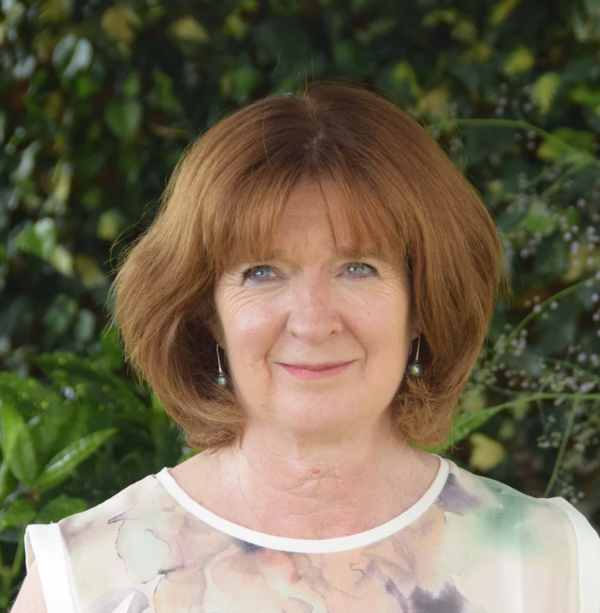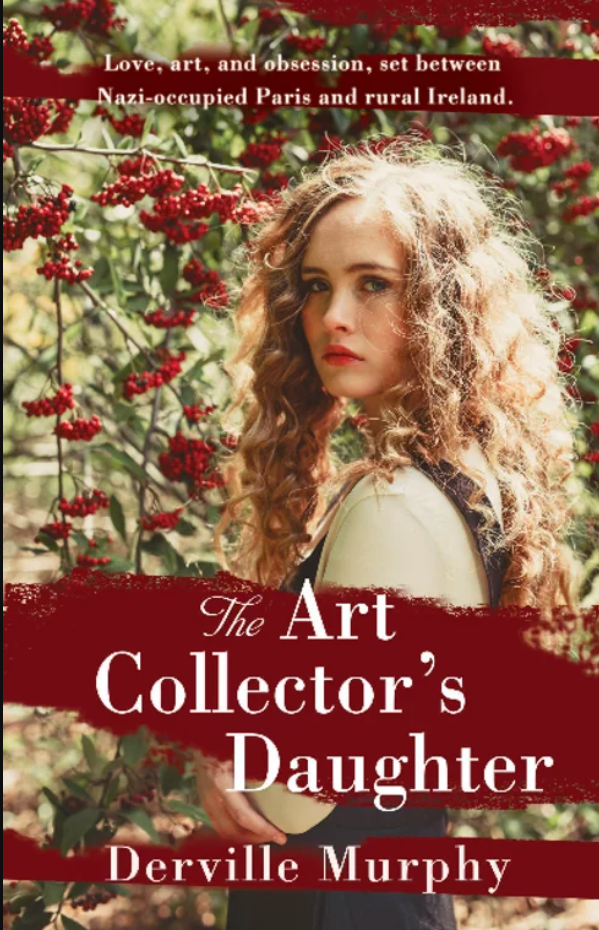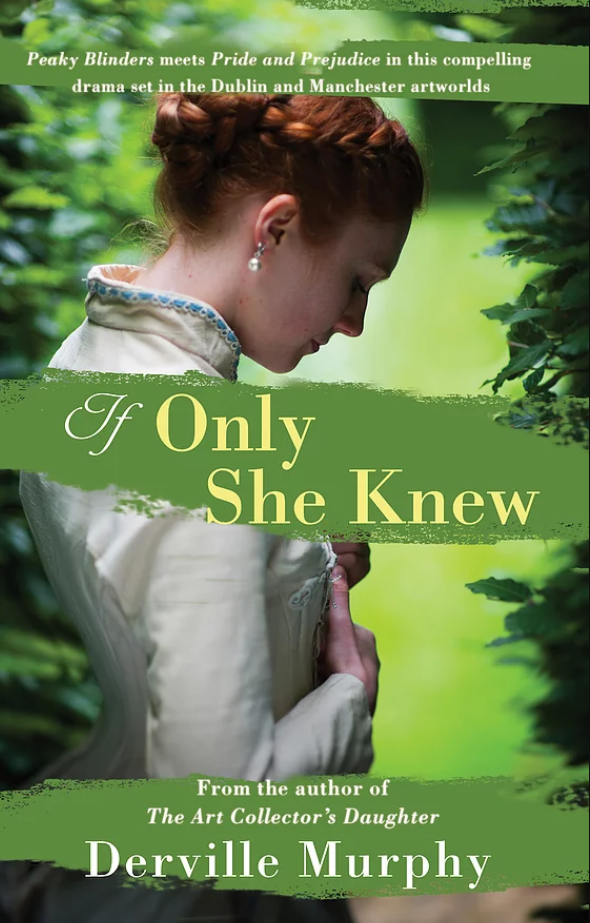
Geneva Pattison
In this interview local author, artist, architect and certified renaissance woman, Derville Murphy, kindly spoke to Newsfour about what drives her to write, how art has influenced her work and what are the makings of a knockout historical fiction novel.
N4: What led and inspired you to delve into the world of writing?
DM: I have always read widely, enjoyed telling stories – I come from a family of great raconteurs. My mother wrote witty poems in the style of Pam Ayres. I was the quiet one! But about six years ago, I joined a short story course in Rathmines College to improve my academic writing. I was studying for a PhD, and I had an idea that I would use it as the basis for a book. But when I finished, I found that I couldn’t write one word more about the subject.
Instead, I was drawn back to previous research that I had started in TCD, as part of an MPhil in the History of Art about Margaret Allen, a Victorian artist, and the first female honorary member of the Royal Hibernian Academy, now largely forgotten. I suspected that she was written out of history because of her nationalist sympathies. I had been fascinated by her story, but when the research trail ran dry, I decided to write a novel as a way of learning more about her. So I enrolled in a part-time novel writing course in UCD with the wonderful Patricia O’Reilly and because of her encouragement, I became hooked, and now, I simply just love writing.
N4: What did you learn about this artist by writing a novel that you couldn’t know otherwise?
When I put myself in her shoes as a Victorian woman, I realised that her life was controlled by the men in her life, and how brave she had been in the subjects she chose in her paintings. I was able to give these paintings meanings that were not understood before.
N4: Previously you were an architect, are there any imaginary settings (or interiors) in your novels inspired by Dublin buildings?
DM: Initially, I went overboard with descriptions of buildings and was advised to tone these down. But conveying a sense of place is fundamentally important to me as a writer. I think I use my skills as an architect to describe the characteristics of places, but my skills as a painter to communicate these as sensual experiences.
Example 1:
The following day, as she passed through the arch from College Green into Trinity College, sounds of traffic in Dublin’s bustling city centre were left behind. She was transported back in time to another age – to the hallowed halls of academia. No matter how many times Claire entered the front square, flanked by red-brick, Neo-classical architecture, each time she was impressed anew. Because, unlike other cities, such as Paris or Rome, Dublin had few grand public spaces – and this one, she thought, had the distinction that you came upon it quite by surprise, hidden within the heart of the city.
From, ‘The Art Collector’s Daughter’.
Example 2.
On long journeys, from Dublin to Donegal, she had whispered stories into her young son’s ears of the adventures of Cú Chulainn, the ancient Gaelic warrior, a giant of a man gifted with superhuman strength and skill. As a child, driving through Inishowen, those ancient tales seemed possible – as mists, like tumbled clouds, rolled down the sides of mountains, and glided across the deep veridian waters of Lough Swilly out towards the open sea and the wild Atlantic Ocean. A land where pockets of turf lay like chequered cloths on rugged terrain, and tenant farmers on smallholdings eked out a meagre living. In the safety of the carriage he listened, enchanted, wrapped in blankets with warmed bricks at his feet, tucked in beside his mother, while his father slept off the Magistrate’s brandy of the night before.
From, ‘If Only She Knew’.
N4: What are the building blocks of an engaging historical novel?
DM: For me, the story is the most important, I hope to take the reader on an exciting, experiential journey to another time and place. In my three novels to date, I have chosen historic subjects that I am interested in and want to learn more about. In The Art Collector’s Daughter the subject was Nazi-looted art – the theme was, what happens when collecting beautiful things becomes an obsession?
But to be able to transport your reader back in time in a totally convincing way, you need to create a world experienced through all of the senses: sounds, tastes and smells.
I try to write prose that is like an artist’s sketch where the reader is fully immersed in that time and place, but in a way that also allows space for their own imagination to visualise the rest.
N4: If you could have dinner with 3 other authors dead or alive, who would be at your dinner table?
DM: Definitely Salman Rushdie, I love listening to him talk about writing and the art of storytelling. The scenarios he creates in his work epitomise the type of colourful, immersive experience I was talking about previously. To challenge and stretch the conversation, I would invite Malcolm Gladwell. When I was younger, he was the first popular psychologist who made me question why we behave the way we do, which is a great pastime of mine. I really enjoyed Blink which looks at the minds ability to know what we cannot always explain, such as the art connoisseur who can often tell instinctively if an artwork is a fake. And finally Maeve Binchy because of her sense of humour, and her ability to shine a light on the vagaries and pleasures of life, be they little or large.

N4: Do you have any new novels in the works?
DM: My latest novel is in its final stages, A Perfect Copy. It tells how Ben Tarrant and Daisy Frome discover they both own identical portraits of an ancestor painted by a renowned Victorian artist, Thomas Rafferty. Experts suspect that one of these is a fake. As Ben and Daisy delve into their family’s past to establish the works provenance, they embark on an extraordinary journey back to the 19th century which takes them from the poverty of the Jewish Pale of settlement in Russia, to Hapsburg Vienna during the building of the Ringstrasse, and then finally to London. In the process they uncover a story of bravery, betrayal and dark family secrets that leads the couple to question everything they once believed to be true about their background and who they really are.
N4: You are also a painter; how does this influence your work?
DM: I am a very visual person, and when I am writing I see the action playing out in my head like a film. My husband describes this as, ‘Derville is off in her meadow!’ As an architect, I like the structure of considering a story this way, in scenes. But I think it is the artistic side of me that pushes the story, that dramatizes it – what if this or that, happened? Sometimes I plan an end, and then become bored with the idea and on a whim change it. I love it when readers say, well I wasn’t expecting that! As a reader, myself, I like to be surprised, to be dying to read the next page, to see what happens. I suppose art, architecture and art history have all shape my writing. But it is my mother’s witty voice in the back of my head that always sees the funny side of life that is one of my biggest influences. I can hear her saying, ‘don’t take yourself too seriously Derville!’ And I don’t.’ I think in life generally that’s a good way to be.
Visit Derville’s website at: https://www.dervillemurphyauthor.com/
To purchase Derville’s books in paperback or as an e-book visit: https://www.amazon.co.uk/Only-She-Knew-compelling-Manchester-ebook/dp/B08SCHCXP2

About Derville Murphy’s new Novel: If She Only Knew, published by Poolbeg Press.
‘If She Only Knew’ described as, ‘Peaky Blinders meets Pride and Prejudice’, is an historical drama set between the art and criminal worlds of Dublin and Manchester. Wilful and spirited, Julia Benson, is disinherited by her father – and forced to be financially dependent on her sister’s controlling husband. When Julia’s Fenian lover goes missing, she tries to find him and unwittingly becomes involved in a plot so dangerous that it could destroy her life, and any chances of Irish Home Rule forever.



